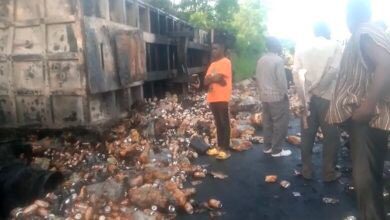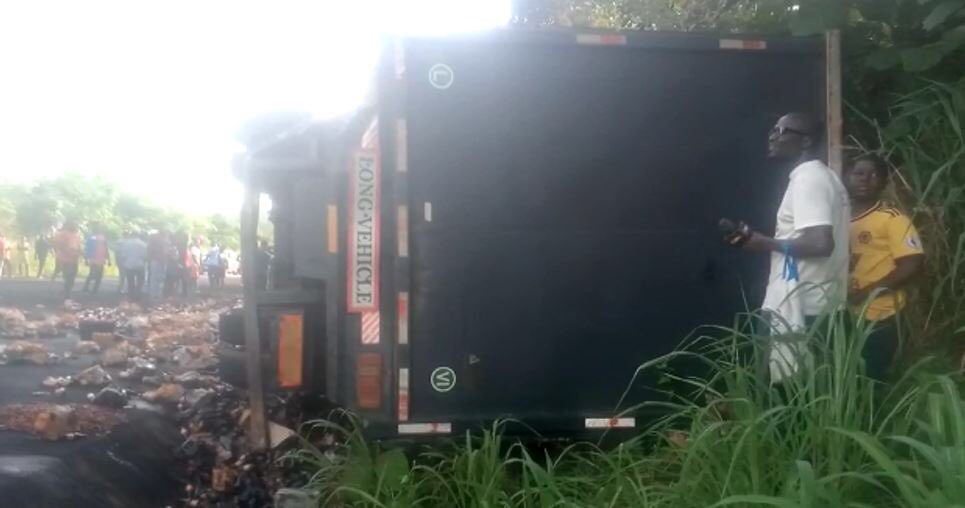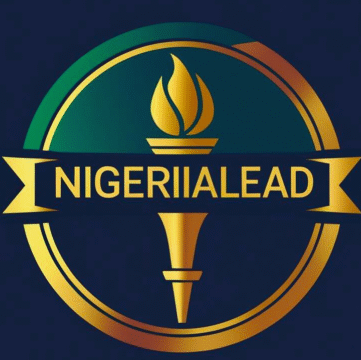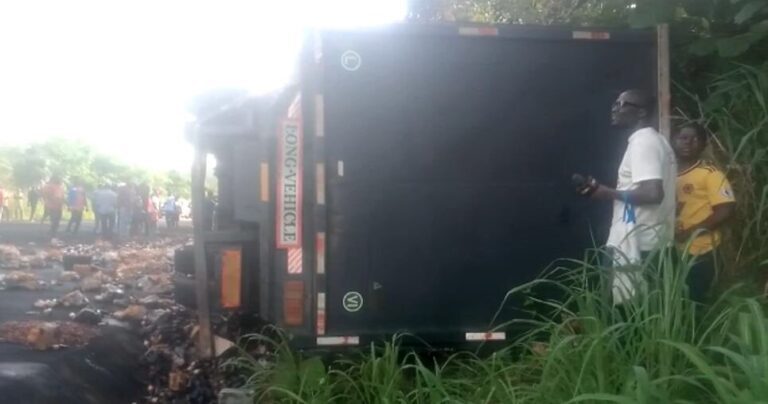Devastating Bus and Diesel Tanker Collision: A Heartbreaking Loss for Muslim Pilgrims




Devastating Bus and Diesel Tanker Collision: A Heartbreaking Loss for Muslim Pilgrims
Imagine a routine trip to the mosque turning into a nightmare in seconds. A bus packed with families heading to pray slammed into a diesel tanker on a busy highway. Flames shot up fast, claiming lives and leaving a scar on every Muslim home that trusts these roads for their faith journeys. This isn’t just a crash report—it’s a call to look deeper at what went wrong and how we can stop it from happening again. We’ll break down the crash details, spot the safety flaws, feel the pain it caused, and push for real fixes to keep our loved ones safe.
Anatomy of the Disaster: Mapping the Collision Sequence
The crash shook everyone who heard about it. Picture a narrow stretch of road where a bus full of pilgrims met a massive tanker head-on. In the blink of an eye, diesel spilled and ignited, turning the scene into a wall of fire that no one could escape.
Immediate Cause and Witness Accounts
Drivers saw the bus swerve suddenly before the impact. One witness said the road had fresh potholes from recent rains, making it hard to stay steady. The tanker, loaded with fuel for local stations, crossed into the bus lane, maybe due to a tired driver or poor signs. Early reports from police note the collision hit at a sharp curve, where speed limits drop but not everyone slows down. Families on board were singing prayers, unaware of the danger closing in.
The Lethality of Diesel Fuel and Fire Dynamics
Diesel doesn’t burn like gas, but once it spreads, it’s ruthless. When the tanker ruptured, fuel poured out and mixed with hot engine parts, sparking a blaze that grew in seconds. Think of it like pouring oil on a grill—it flares up and keeps going, hard to put out without special foam. Experts say these fires reach over 1,000 degrees, melting metal and trapping people inside. In this case, the bus’s doors jammed from the hit, worsening the trap as smoke filled the air fast.
Official Preliminary Investigation Findings
Transport officials jumped in right away to check the facts. They looked at black box data from the bus, showing speeds over the limit by 10 miles per hour. No clear mechanical fault yet, but tire wear on the tanker raised red flags. Driver logs showed the bus operator skipped a rest break, a common issue on long routes to holy sites. Early tests rule out weather as the main culprit, pointing instead to human error mixed with bad road design.
Systemic Failures in Transport Safety Protocols
Roads carry our daily lives, but when safety rules fall short, disasters like this bus-diesel tanker crash hit hard. We can’t ignore how weak oversight lets risks build up over time. Let’s dig into the cracks that let this happen.
Regulatory Gaps in Passenger and Hazardous Material Transport
Laws often keep passenger buses and fuel trucks on the same paths, but they shouldn’t. In many areas, no rule forces tankers to use back roads away from pilgrim buses. For example, during peak prayer times, routes near mosques get crowded, yet tankers roll through without detour plans. A simple fix could be time slots for hazardous loads, like banning them during rush hours to Friday prayers. Without these, collisions like this one feel almost expected.
Vehicle Maintenance and Inspection Failures
Buses and tankers need regular checks to catch problems early. But some companies cut corners to save cash, skipping oil changes or brake tests. In this crash, reports hint the tanker’s valves were old and prone to leaks—something a yearly inspect should have caught. Imagine your family car without tune-ups; multiply that by 50 passengers. Stronger fines for skipped maintenance could push owners to act, preventing fuel spills that turn wrecks into infernos.
Driver Training and Fatigue Management
Long hauls wear drivers down, leading to split-second mistakes. Rules say bus drivers must rest eight hours after 10 on the road, but enforcement is spotty. Tanker operators face similar rules, yet many push through with coffee instead of sleep. Training should include simulations of curves and bad weather, especially for routes to worship spots. If drivers knew the signs of fatigue—like yawning or drifting lanes—they might pull over. Better yet, apps that track hours could alert bosses before risks build.
The Profound Societal and Spiritual Impact
This tragedy didn’t just take lives; it broke spirits in tight-knit Muslim communities. Prayers for the safe return of loved ones now mix with tears. How do we heal when faith trips end in flames?
Grief, Loss, and Community Cohesion
Families gathered at mosques the next day, sharing stories of the lost. One mother lost her son and daughter on their first big trip together— a wound that time alone can’t close. In Muslim groups, these bonds run deep; everyone feels the hit like it’s their own. Support networks kicked in quick, with neighbors bringing food and imams leading group prayers. This shared sorrow actually pulls people closer, turning pain into a force for unity.
Memorialization and Remembering the Fallen
Communities lit candles and held walks to honor the victims. Online funds raised thousands for burials and aid to survivors’ kin. Some mosques now plan annual remembrances, planting trees for each life gone. Photos of smiling faces from the bus trip circulate, keeping memories alive. These acts aren’t just rituals; they build hope, reminding us to cherish every journey.
Psychological First Aid and Supporting Survivors
Survivors face nightmares of fire and screams for months. Community leaders can start by listening without judgment, letting folks talk it out in safe spaces like prayer circles. Mental health pros recommend simple steps: deep breathing exercises during panic, or journaling to sort thoughts. For religious groups, tying support to faith—like reading soothing verses—helps most. Quick access to counselors at local centers prevents isolation, guiding people back to normal life step by step.
- Spot signs of trauma: Flashbacks or avoiding roads.
- Offer basics: Hot meals, rest, and check-ins.
- Link to help: Free hotlines for grief support.
Moving Forward: Actionable Steps for Enhanced Road Safety
We can’t bring back the lost, but we can fight for changes that save others. From better rules to new tech, here’s how to make highways safer for pilgrim buses and fuel hauls alike.
Advocating for Stricter Route Planning for Tankers
Push lawmakers to map out tanker paths that skip busy spots. Designate “no-fuel zones” near mosques and highways with high pilgrim traffic. Groups like safety watchdogs can petition for signs that warn of curves ahead. In one state, a similar rule cut crashes by 20%—proof it works. You can join by writing to reps or signing online drives for these shifts.
Implementing Advanced Collision Avoidance Technology in Buses
Modern buses could use sensors that brake automatically if a crash looms. These systems spot tankers veering close and alert drivers with beeps or steers. Cost drops yearly, making it doable for fleets. Picture it: A warning saves a swerve, averting the whole mess. Mandating this in all passenger rigs would slash errors from tired eyes.
Enhancing Emergency Response Capabilities near Major Highways
Fire crews need gear built for diesel blazes, like foam trucks parked close by. Train them on bus rescues, practicing door breaches in mock fires. Stations along routes could add rapid units that arrive in under 10 minutes. Stats show quick response halves deaths in fuel wrecks. Local budgets should fund this, with drills twice a year to stay sharp.
Conclusion: From Tragedy to Tenacity
This bus and diesel tanker collision exposed raw flaws in our roads and rules, hitting Muslim families where it hurts most—on paths to worship. We saw the crash unfold, the safety gaps that fed it, the deep grief it sparked, and clear paths to fix things. It’s a stark reminder: Preventable errors cost lives, but action can honor the fallen.
Key takeaways include bridging those transport gaps to keep passengers and cargo apart, rolling out tech to catch mistakes early, and boosting community strength through remembrance. Let’s turn this wound into resolve. Contact your local leaders today—demand safer routes and better training. Together, we make every trip to the House of Allah a safe one.




